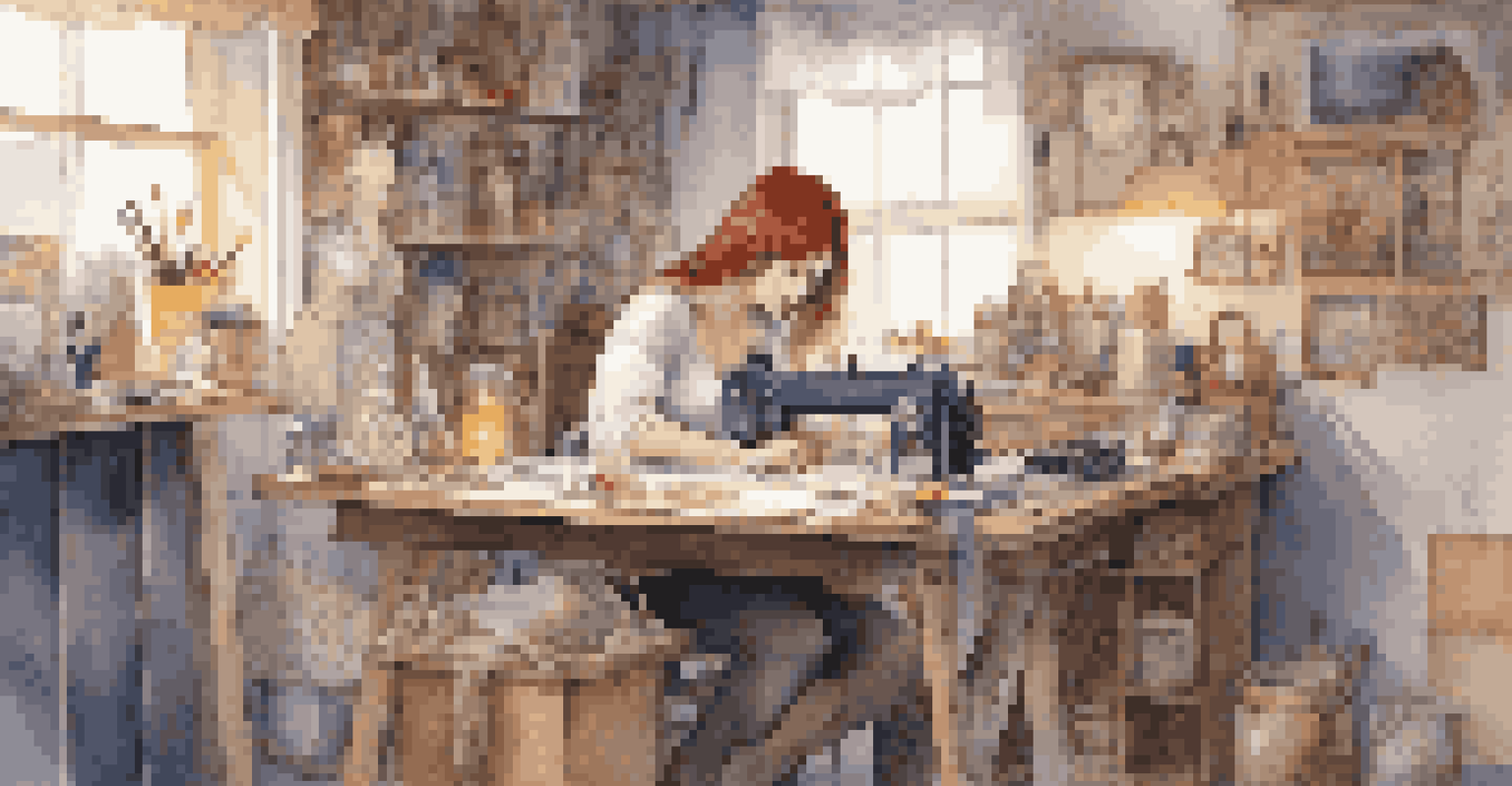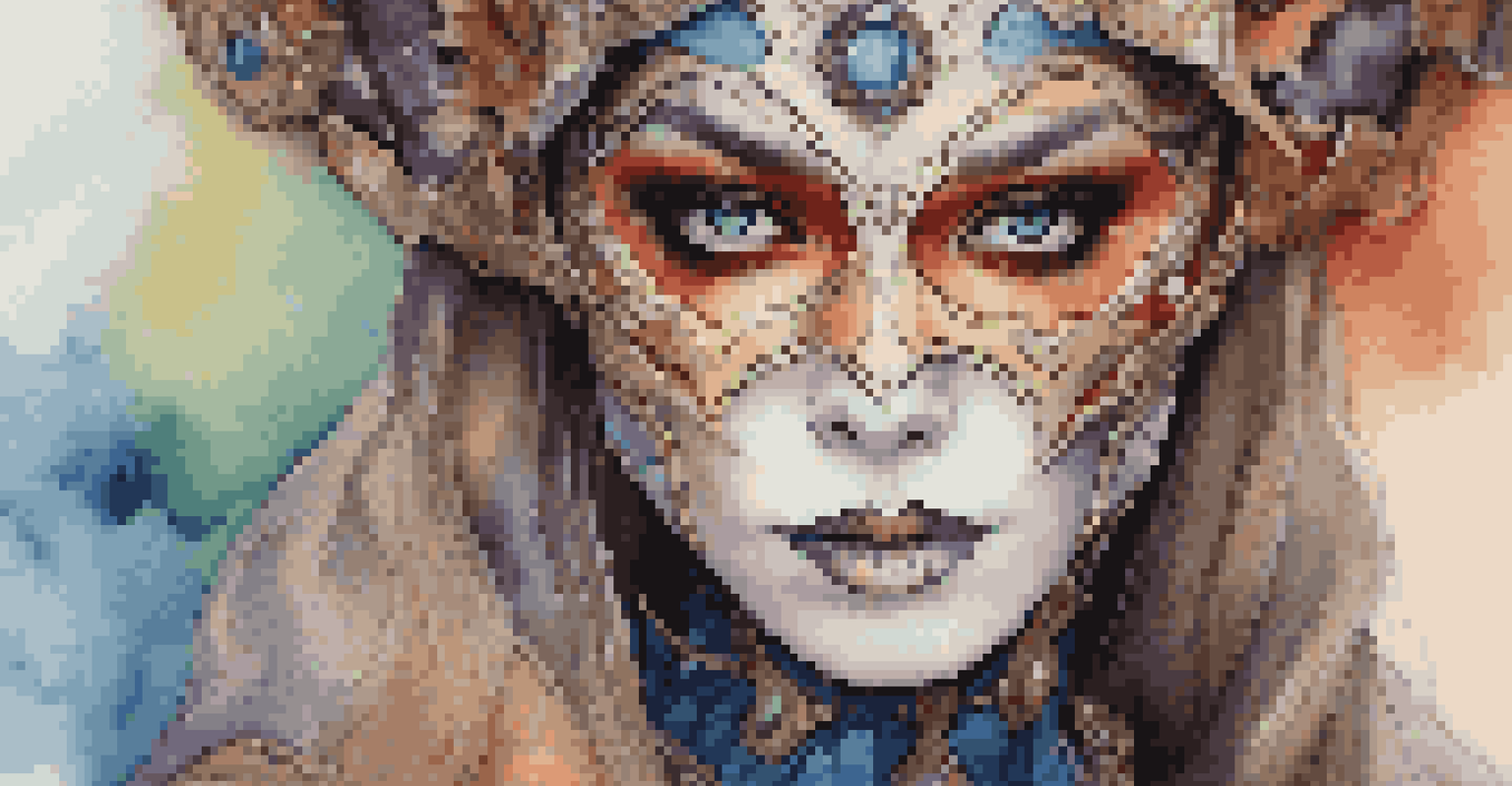The Role of Social Media in Cosplay: Connecting Creators

The Rise of Social Media in the Cosplay Community
In recent years, social media has transformed the landscape of cosplay. Platforms like Instagram, TikTok, and Twitter have become vibrant hubs where creators share their costumes and experiences. This shift has made it easier for cosplayers to connect and showcase their work to a global audience.
Social media is about the people, not about the tools. It's about how we use the tools, and what we make of them.
Before the digital age, cosplayers relied heavily on conventions and local meetups to share their passion. Now, with just a few clicks, a cosplayer can post a photo or video and receive feedback from fans across the world. This democratization of exposure has brought a new energy to the community.
As a result, social media has not only amplified individual voices but also fostered a sense of belonging among creators. Cosplayers can now find support and inspiration, making the journey of costume creation even more rewarding.
Building a Community: Finding Your Tribe Online
Social media platforms serve as a vital tool for cosplayers to find their niche. By using hashtags like #Cosplay and #CosplayCommunity, creators can discover others who share their interests and styles. This sense of belonging can be incredibly empowering for newcomers.

For many, the cosplay community is like a second family, where individuals can express themselves freely and share their love for pop culture. Whether it's through group chats, forums, or comment sections, these interactions help forge lasting friendships.
Social Media Connects Cosplayers
Platforms like Instagram and TikTok have transformed the cosplay community by enabling creators to share their work and connect globally.
Moreover, these connections often lead to collaborations, where cosplayers can work together on projects or attend conventions as a team. This collaborative spirit creates an enriching environment that encourages creativity and growth.
Showcasing Talent: The Power of Visual Platforms
Visual platforms like Instagram and TikTok are ideal for cosplayers to showcase their work. A striking costume or a well-executed skit can go viral, bringing attention to a creator's talent and hard work. This visibility can lead to opportunities such as sponsorships or collaborations with brands.
Creativity is contagious, pass it on.
For instance, many cosplayers have successfully turned their passion into a full-time career by leveraging their social media presence. By engaging with followers and sharing behind-the-scenes content, they create a personal brand that resonates with audiences.
Additionally, these platforms allow for experimentation with different styles and ideas. Cosplayers can quickly gauge audience reactions, helping them refine their craft and explore new creative directions.
Learning and Sharing Knowledge: Tutorials and Tips
Social media is a treasure trove of resources for cosplayers looking to improve their skills. Many experienced creators share tutorials, tips, and tricks for everything from sewing techniques to makeup application. This culture of sharing knowledge fosters growth within the community.
Platforms like YouTube are particularly useful for in-depth tutorials, where creators can demonstrate processes step by step. Learning from others' experiences can save time and help newcomers avoid common pitfalls.
Community Growth Through Collaboration
Social media fosters a sense of belonging and support among cosplayers, encouraging collaboration and friendships within the community.
Moreover, this exchange of information strengthens community bonds. When a cosplayer shares a helpful tip, it encourages others to do the same, creating a cycle of support and collaboration.
The Role of Feedback: Encouragement and Critique
Feedback plays a crucial role in the cosplay community, and social media provides a platform for it. Creators often post their work and seek constructive criticism, which can help them improve their craft. Positive comments can boost confidence, while constructive feedback can guide future projects.
This open exchange can be a double-edged sword, though. While most feedback is supportive, some criticism may be harsh or unhelpful. It's important for creators to develop a thick skin and focus on advice that can truly enhance their skills.
Ultimately, a strong support system can turn feedback into a powerful motivator. Recognizing that others care about your growth can inspire cosplayers to continue pushing their boundaries.
The Influence of Trends: Staying Relevant in Cosplay
Social media is notorious for its trends, and the cosplay community is no exception. Trending characters or themes can rapidly influence what cosplayers create, leading to a surge of similar costumes. This phenomenon can be both exciting and overwhelming for creators trying to stand out.
For instance, when a new movie or video game is released, cosplayers often rush to create costumes based on popular characters. While this can generate engagement, it also raises the challenge of maintaining individuality amidst a flood of similar creations.
Trends Shape Cosplay Creations
Trending characters and themes on social media influence cosplayers' creations, presenting both opportunities and challenges for originality.
Navigating trends while staying true to one's style is an art in itself. Successful cosplayers often find a balance between embracing trends and showcasing their unique flair, keeping their content fresh and engaging.
Expanding Horizons: Global Connections Through Cosplay
One of the most beautiful aspects of social media is its ability to connect people from around the globe. Cosplay transcends borders, allowing creators from diverse backgrounds to share their interpretations of characters. This cultural exchange enriches the community and broadens perspectives.
For example, a cosplayer from Japan might inspire someone in Brazil with their traditional crafting techniques, fostering a mutual appreciation for different cultures. This kind of global interaction encourages creativity and innovation in costume design.

Moreover, these connections often lead to friendships that span continents. Cosplayers can collaborate on projects or participate in online conventions, making the world feel a little smaller and more connected.
Conclusion: The Future of Cosplay in the Digital Age
As social media continues to evolve, its impact on the cosplay community will likely grow. The connections formed online will remain essential for fostering creativity and collaboration among creators. With each passing year, the community becomes more inclusive and diverse.
Looking ahead, new platforms and technologies could further enhance the ways cosplayers interact and share their work. Virtual reality, for example, could allow for immersive experiences, bringing cosplayers together in ways we can only imagine.
The future is bright for cosplayers, with social media serving as a powerful ally in their creative journey. By continuing to connect, inspire, and collaborate, the community will flourish and thrive for years to come.